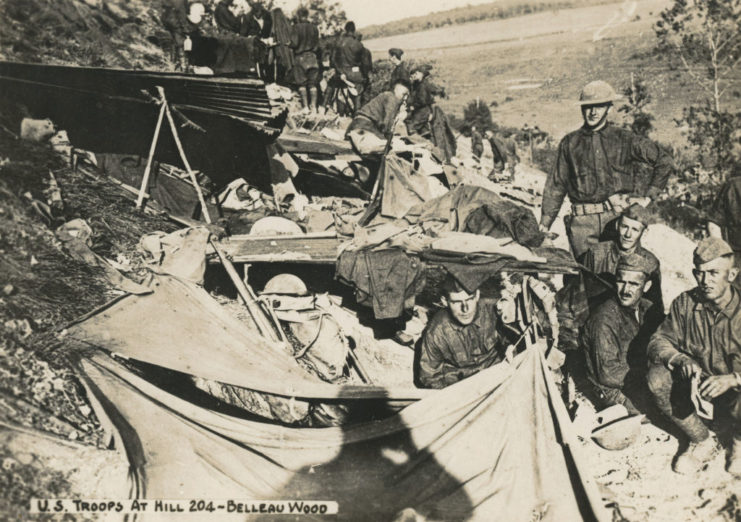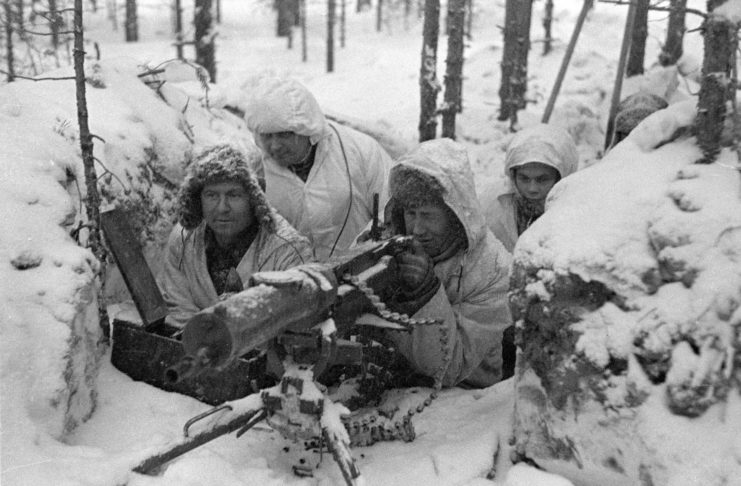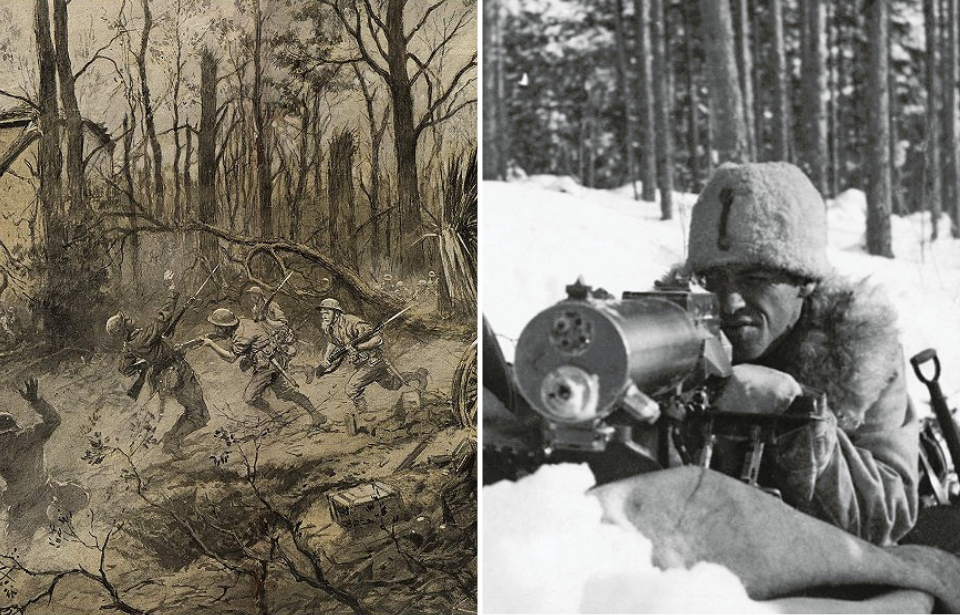Battle of Belleau Wood
It’s very common for films to be made about World War II. Movies about the Vietnam War were also quite common during the 1980s. There are not, however, many movies about the First World War. The Battle of Belleau Wood was fought in France in 1918, and saw the Germans take on French, American and British soldiers. It is also considered the battle where the US Marine Corps truly came into its own. As such, it would make for a great film.

All great movies have a likable hero, and Marine Dan Daly makes for a great one. Daly, a legendary member of the US military, is treated as almost a mythical figure within the Marine Corps. It was during the Battle of Belleau Wood that he uttered the famous line, “Come on, you sons of *******, do you want to live forever,” while leading a charge.
As well, the Allied victory was the first major engagement the US Army fought during WWI. Despite their attempts to gain ground during the spring offensive, the tired German soldiers were no match for the Americans, who continued to eagerly showcase their skills after entering the conflict in 1917.
This one should be green-lit immediately.
The Winter War
In the late 1930s, Joseph Stalin was fixated on expanding his territorial reach. With a massive army and thousands of tanks at his disposal, he saw Finland as an appealing target. Underdog tales always captivate audiences, and this real-life David versus Goliath story is no exception.
Russia invaded Finland in late 1939, a decision that proved ill-advised. Although Russians were accustomed to cold climates, the Finns had an intimate knowledge of their local terrain, which they skillfully exploited. Ski troops maneuvered through the rugged landscape to conduct guerrilla attacks, easily spotting Soviet forces against the stark white snow.

Equally remarkable was Finland’s dominance in the air. Despite having a small Air Force, the Finns maintained high standards for selecting their pilots. During the conflict, Finnish pilots achieved a significantly higher number of Soviet aircraft shot down compared to their own losses.
The snowy Finnish landscape in winter would also provide a breathtakingly cinematic backdrop for this story.
Battle of Carrhae

Crassus’s ambition knew no bounds, leading him to launch a campaign against Parthia in pursuit of wealth and renown. The venture ended in disaster. During a subsequent peace negotiation the following day, the Parthians executed him in a gruesome display—pouring molten gold into his mouth as a symbolic punishment for his insatiable greed.
This infamous death reportedly inspired a strikingly similar moment in the first season of HBO’s Game of Thrones, where the show mirrored history’s grim lesson on avarice and hubris.
Battle of Yorktown
Despite the clear importance to the history of the country, there have been very few movies made about the Revolutionary War. Thanks to the wild success of the Broadway musical Hamilton, however, now would be as good a time as any to shine a light on the time period. A great place to start would be with a movie about the Battle of Yorktown.

The Americans won the battle, thanks to a collaboration between George Washington and the Marquis de Lafayette. After three weeks of fighting, the movie would certainly have a happy ending. The Battle of Yorktown ended with the surrender of the British forces, leading to the Treaty of Paris and American independence.
Battle of Longewala
Though the 1997 Bollywood film Border brought the Battle of Longewala to Indian audiences, its extraordinary story deserves wider international acclaim. Beyond being a dramatic account of a vastly outnumbered force standing firm against overwhelming odds, the engagement is also remembered for its unexpected flashes of humor amid chaos—an uncommon and deeply human quality that sets it apart from most wartime encounters.

During the Battle of Longewala, roughly 2,000 Pakistani troops supported by 45 tanks advanced toward a position held by just 120 Indian soldiers. Lacking significant heavy weaponry, the defenders relied primarily on a single recoilless rifle to disable enemy armor. Their odds improved when several Pakistani tanks bogged down in the soft desert sand, leaving them exposed to accurate Indian fire.
Confusion soon deepened the attackers’ troubles. Mistaking a stretch of barbed wire for a minefield, Pakistani forces halted their offensive for nearly two hours as they awaited clearance equipment. That hesitation proved disastrous. The pause allowed the Indian defenders to regroup, and by the time reinforcements and air support arrived, the tide had turned. Indian aircraft hammered the stalled column, forcing a chaotic retreat and turning what was meant to be a decisive offensive into a humiliating defeat.
